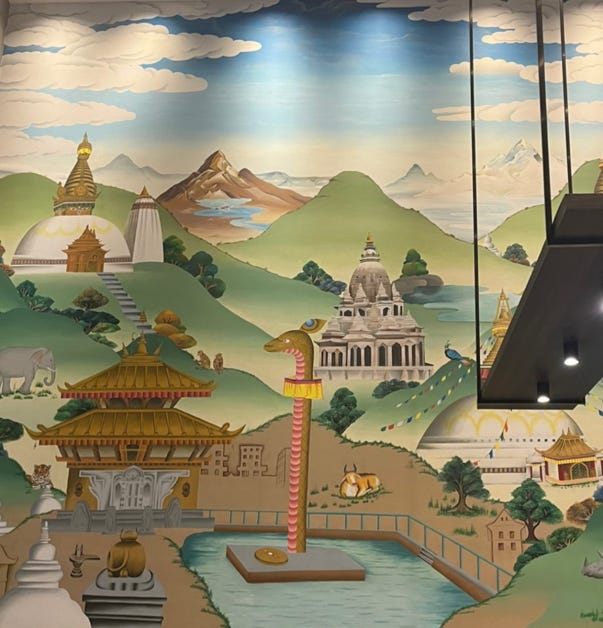Kathmandu, Nepal
Peaks, Momos, Yaks, Monastries
Streets of Nepal. You can spot everything that is Nepal on the streets of Kathmandu. There are Tibetan Buddhist prayer flags fluttering overhead, big and small stupa domes dotting the skyline, Hindu monks in bright orange robes strolling by, and yak caravans weaving through the markets. Trekking booths line the sloping streets, offering tours and snow gear. All this unfolds in a city nestled in a mountainous region, with the world’s highest peaks visible in the distance- its a beautiful hill station
Bloody Royals. The Narayanhiti Palace Museum in Kathmandu offers a walk through Nepal’s royal history and its dramatic shift from monarchy to democracy. Once the royal residence, the palace became the epicenter of national tragedy in 2001, when then Crown Prince Dipendra allegedly opened fire during a family gathering—killing King Birendra, Queen Aishwarya, and several other royals before turning the gun on himself. This bloody event shocked the nation (naturally) and is known to have significantly accelerated Nepal’s transition toward the federal democratic republic it is today. Most locals do not speak of the event, and you’d be hard pressed to find more information other than the brief accounting of events at the museum. Believe me, I tried
Nepali ‘momos’ are dimsums? Nepali momos and dim sum are like culinary cousins who grew up in different households
While dim sum hails from the refined traditions of Cantonese cuisine, Nepali momos were raised in the Himalayas and eventually traveled across borders to India and neighboring countries—where people (like me) know and love them simply as momos. These dumplings are often eaten with your hands, generously dipped in fiery tomato-sesame achar (sauce), and come in a dozen tempting styles: steamed, fried, kothey (pan-fried), jhol (in spiced broth), chili (tossed in sauce), and even dessert-inspired versions like chocolate, cheese-filled, or smoky tandoori momos. Dim sum, by contrast, leans simpler—delicate dough parcels filled with meat or vegetables, often accompanied by soy-based dips or light tea. The concept is similar, but the textures, accompaniments, and flavor profiles are distinct. Most menus in Nepal have momos as a given on their offerings, and most of your meals should include them, they are one of a kind, only found here
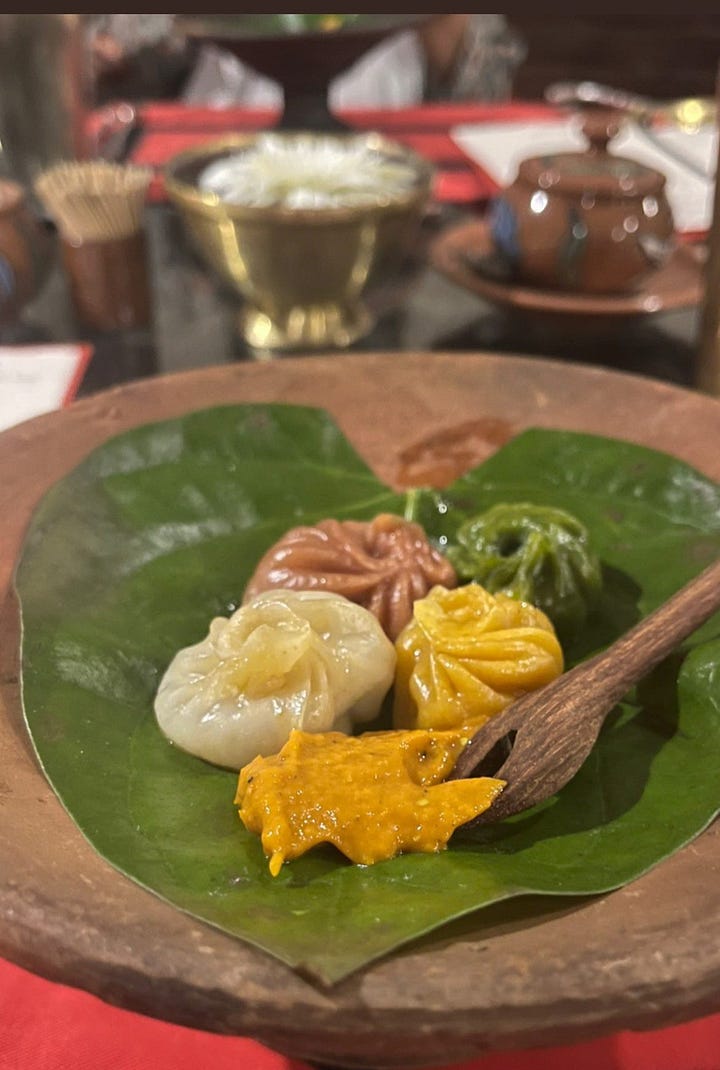
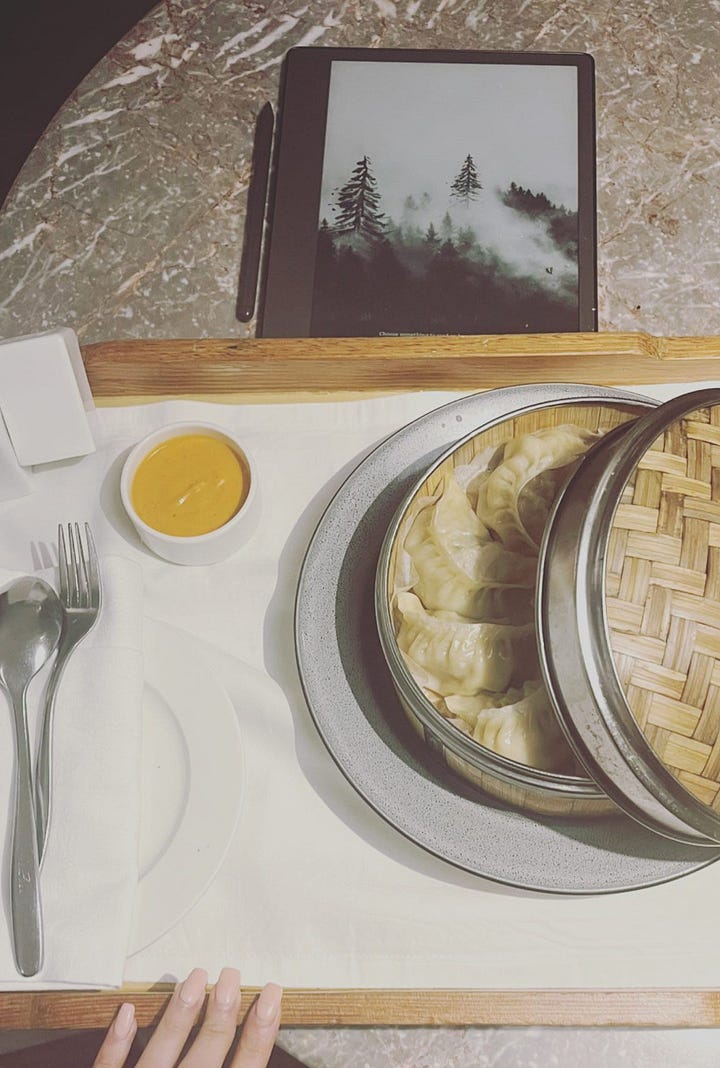
Prayer Bells and Stupas. Kathmandu is home to two iconic Buddhist stupas that you simply can’t miss: Swayambhunath, famously known as the Monkey Temple (because yes, curious monkeys will definitely be eyeing your food and belongings), and Boudhanath Stupa, one of the largest and most significant stupas in the world. At both sacred sites, you’ll find locals, pilgrims, and monks walking clockwise around the prayer wheels—a central ritual in Tibetan Buddhism. It’s said that you can make a wish while circling them. I remember wishing for two things: that my food and I would be safe from those sneaky monkeys — and yes, sometimes, wishes do come true.
Souveniers at Durbar Mall, DurbarMarg, Thamel. Durbarmarg offers a stylish blend of traditional crafts and luxury souvenirs—from handwoven textiles and pashmina shawls to Thangka paintings, intricate metalwork, and artisan jewelry. Durbar Mall houses a range of international and local brands, along with curated artifacts. Nearby, Thamel serves as Kathmandu’s open market, buzzing with everything from trekking gear to handicrafts.
From one of these spots, I picked up Bagh-Chal—Nepal’s classic two-player board game, also known as “Tigers and Goats.” The game pits four tigers against a herd of 20 goats in a strategic jungle showdown: tigers can pounce and eat goats, but goats can trap the tigers—and once cornered, it’s game over. It’s like chess with a wild twist. Locals grow up playing it, and you’ll find beautifully hand-carved wooden or brass versions across the city—equal parts game and keepsake.
Art Galleries. In a charming heritage site called the Baber Mahal Revisited complex, you’ll find several intimate art spaces that offer a window into Nepal’s evolving creative scene. Notable spots include the Siddhartha Art Gallery, Nepal Art Council, and Bikalpa Art Center.
Here I was on a lookout for Prabal Gurung designs - the Nepalese American designer who has several brands and stores in NYC, and designs for Michelle Obama - but alas he has no stores in Kathmandu. I did pick up some art pieces from the galleries, and would recommend visiting for shopping or window shopping
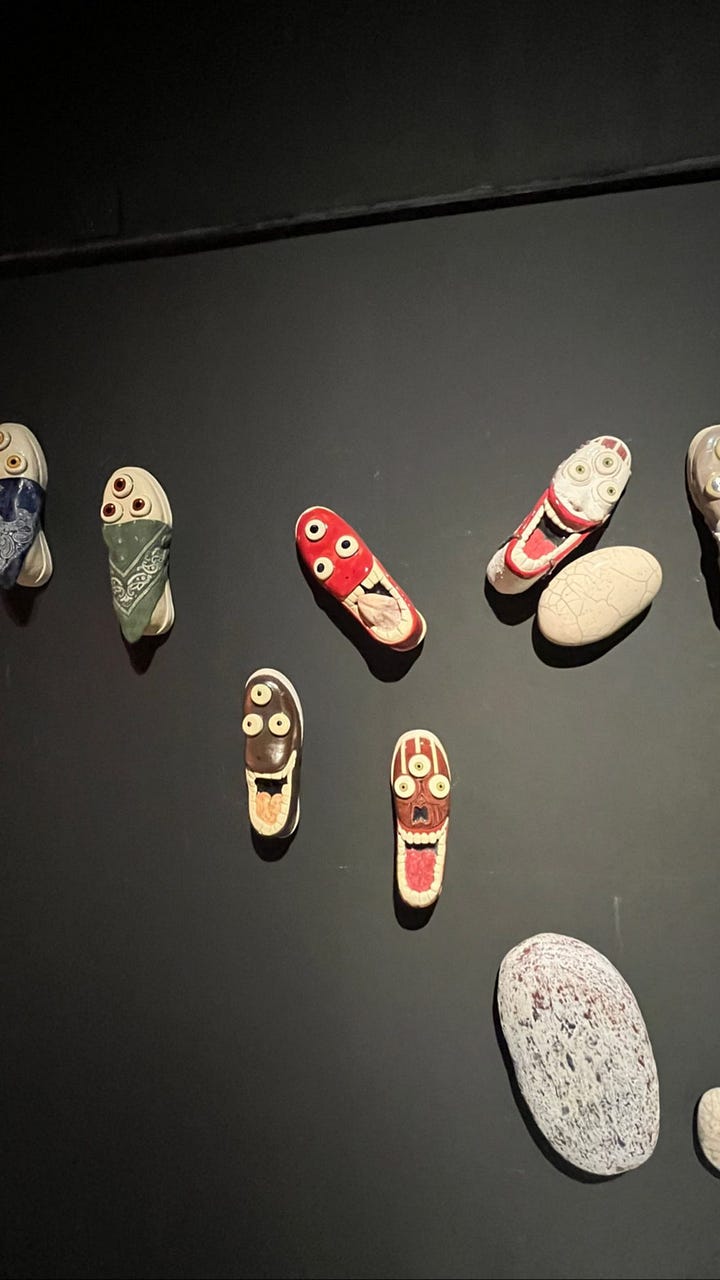
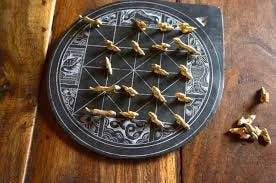
God’s preferential treatment? This UNESCO World Heritage Site is one of the most revered Hindu temples in Nepal—the sacred Pashupatinath Temple. The main pagoda-style temple, with its gilded roof and intricately carved silver doors, is only accessible to practicing Hindus. As a non-religious Hindu, this wasn’t exactly on my bucket list, but I visited anyway—mostly to honor my very devout grandmother’s wishes.
There was a separate entry gate for Hindus (yes), while non-Hindus were allowed to observe the temple complex from across the Bagmati River. (Apparently, God has his favorites.) Pilgrims were chanting, saffron-clad monks meditating—or occasionally posing for photos—and open-air cremations taking place along the ghats. For many Hindus, having one’s final rites performed here is believed to lead to moksha—liberation from the cycle of rebirth.
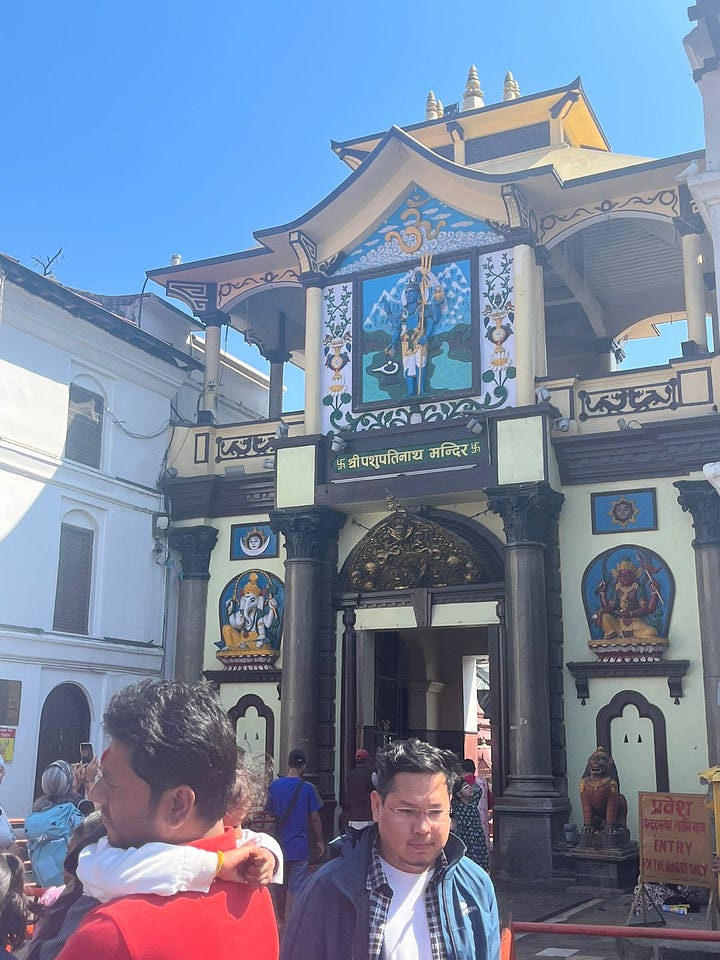
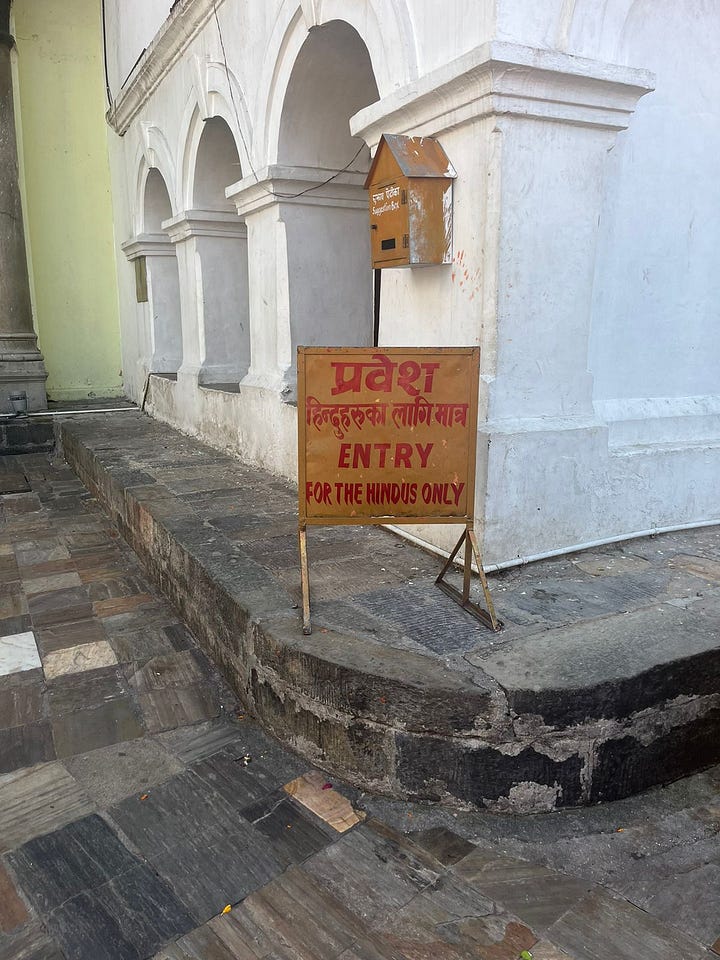
Peek/Peaking outside Kathmandu. Just southwest of Kathmandu lies Chandragiri Hill Station, known for its scenic cable car ride and panoramic views of the valley and Himalayan range- its usually a top recommendation from the locals.
And then venture hundreds of kilometers further, and you meet the real giants—Annapurna (8,000m), Kangchenjunga (8,500m+), and of course, Mount Everest (8,800m+). Nearly everyone I met in Kathmandu casually dropped how they’d done a base camp trek to one of these peaks over the weekend. Their motto? “Pahaad chadnus, daal khanus” — meaning, Climb the mountain, eat lentils.

